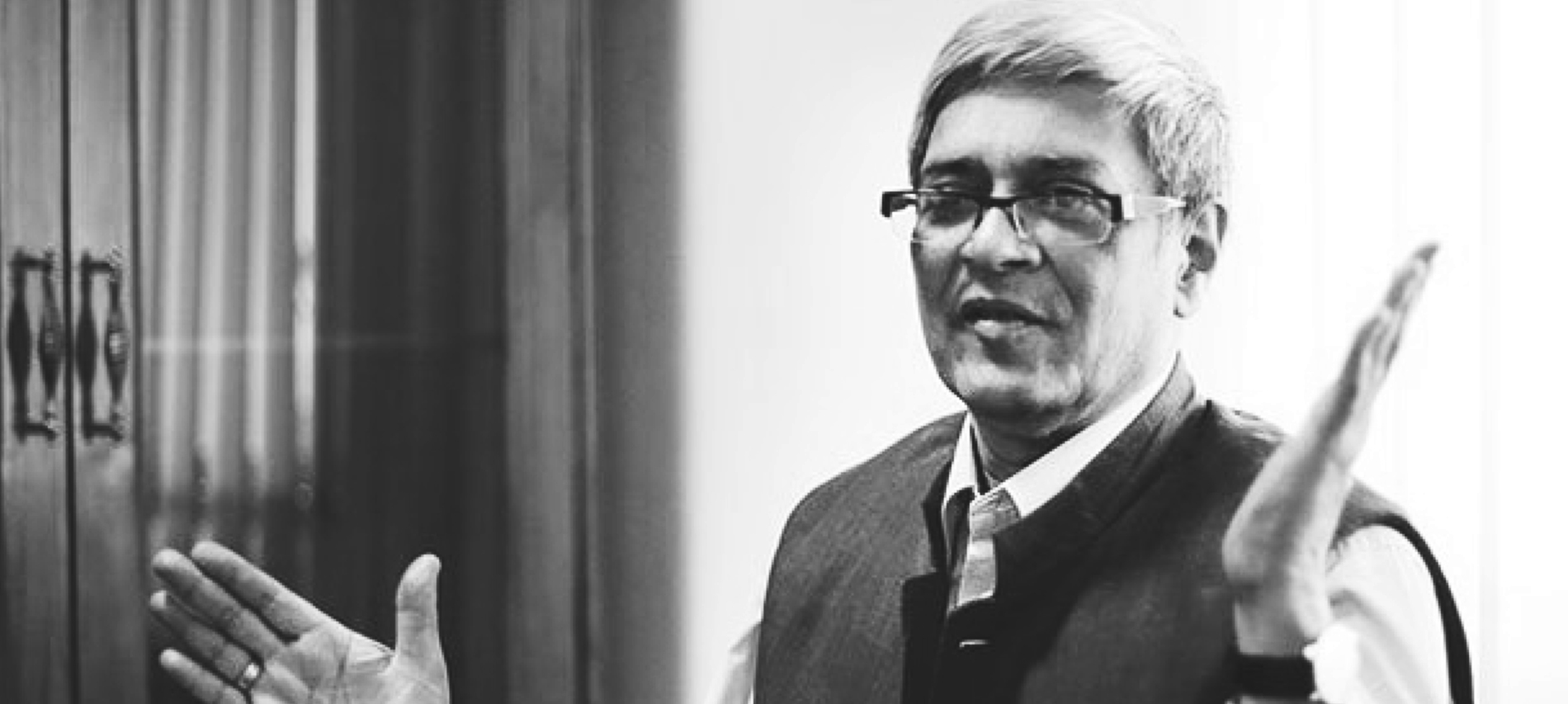
By Bibek Debroy:
There are many versions of the Ramayana and not all are in Sanskrit. However, the Valmiki Ramayana, composed by the sage Valmiki in Sanskrit, is clearly the oldest. It is the oldest surviving version. Perhaps the story was already known and Valmiki simply retold it in the form of a beautiful composition. Therefore, he may not have been the first person to tell the story. We shall never know. Nor is it important to know that to appreciate the Valmiki Ramayana.
Indeed, we are not quite sure about what Valmiki composed. In those days, there was no writing. In the process of oral transmission, subsequent composers added their own embellishments. Today, the text of the Sanskrit Valmiki Ramayana has around 24,000 shlokas, a shloka being a verse. These 25,000 shlokas are distributed across seven kandas – Bala Kanda (Book about Youth), Ayodhya Kanda (Book about Ayodhya), Aranya Kanda (Book of the Forest), Sundara Kanda (Book of Beauty), Yuddha Kanda (Book about the War) and Uttara Kanda (Book about the Sequel). Kanda refers to a major section or segment and is sometimes translated into English as Canto. “Canto” sounds archaic, “Book” is so much better. This does not mean the kanda-wise classification always existed. For all one knows, initially, there were simply chapters. Most scholars agree Uttara Kanda was written much later. It doesn’t quite belong. This isn’t only because of the content. It is also because of the texture of the text, the quality of the poetry. It is vastly inferior. To a lesser extent, one can also advance similar arguments for the Bala Kanda. Therefore, the earlier portions of the Valmiki Ramayana were probably composed around 500 BCE. The later sections, like the Uttara Kanda, and parts of the Bala Kanda, were probably composed around 500 ACE. It isn’t the case that all later sections are in Uttara Kanda.
The translation published by Penguin in three volumes is of the Valmiki Ramayana. It is necessary to stress this point. The Ramayana story is so popular that one is familiar with people, stories and incidents. That doesn’t necessarily mean those people, stories and incidents occur in the Valmiki Ramayana in the way we are familiar with them, our familiarity based on other versions of the Ramayana story. Even within the Sanskrit Valmiki Ramayana, there are many different manuscripts. Between 1951 and 1975, the Oriental Institute, Baroda, produced a Critical Edition of the Valmiki Ramayana. This translation is based on that Critical Edition, published sequentially between 1958 and 1975. Producing a Critical Edition meant sifting through a large number of manuscripts of the Valmiki Ramayana. The editors had around 2000 manuscripts to work with. It is not that there were significant differences across the manuscripts and broadly, there was a Southern Recension (version) and a Northern one, the latter sub-divided into a North Western and a North Eastern one. The earliest of these written manuscripts dates to the 11th century CE. In passing, the language may have been Sanskrit, but the script wasn’t always devanagari. There were scripts like Sharada, Mewari, Maithili, Bengali, Telugu, Kannadi, Nandinagari, Grantha and Malayalam. The translation published by Penguin is based on the Baroda Critical Edition. To repeat what I have already said, some Ramayana stories and incidents we are familiar with, many not exist in this version.
The Valmiki Ramayana consists of beautiful poetry. Valmiki is the first poet, ad kavi. The story of how it came about is known to most people who are familiar with the Ramayana. The sage Valmiki had gone, with his disciple Bharadvaja, to bathe in the waters of the River Tamasa. There was a couple of curlew birds there, in the act of making love. Along came a hunter and killed the male bird. As the female bird grieved, Valmiki was driven by compassion and the first shloka emerged from his lips. Since it was composed in an act of sorrow (shoka), this kind of composition came to be known as shloka. So the Ramayana tell us. It is impossible to capture the beauty of this poetry in an English translation. As composers, there is quite a contrast between Valmiki and Vedavyasa, the author of the Mahabharata. Both texts are in the form of poetry and both composers were poets, but there the similarity ends. Vedavyasa focuses on people and incidents. Rarely does the Mahabharata attempt to describe nature, even if those sections are on geography. In contrast, Valmiki’s descriptions of nature are lyrical and superlative, similar to Kalidasa. A translation can never hope to transmit that flavor. There is no substitute to reading the original Sanskrit, more so for the Valmiki Ramayana than for the Mahabharata.
As with the Mahabharata, the Valmiki Ramayana is a text about dharma. Dharma means several different things – the dharma of the four varnas and the four ashramas; the governance template of raja dharma, the duty of kings; principles of good conduct (sadachara); and the pursuit of objectives of human existence (purushartha) – dharma, artha and kama. As with the Mahabharata, the Valmiki Ramayana is a smriti text. It has a human origin and composer, it is not a shruti text. Smriti texts are society and context specific. We should not try to judge and evaluate individuals and actions on the basis of today’s value judgements. In addition, if the span of composition was one thousand years, from 500 BCE to 500 ACE, those value judgements also change. Transcending all those collective templates of dharma, there is one that is individual in nature. Regardless of those collective templates, an individual has to decide what the right course of action is and there is no universal answer as to what is right and what is wrong. There are always contrary pulls of dharma, with two notions of dharma pulling in different directions. It is not immediately obvious which is superior. Given the trade-offs, an individual makes a choice and suffers the consequences. Why is there an impression that these individual conflicts of dharma are more manifest in the Mahabharata than in the Ramayana?
The answer probably lies in the nature of these two texts. What is the difference between a novel and a long story, even when both have multiple protagonists? The difference between a novel and a long story is probably not one of length. A novel seeks to present the views of all protagonists. Thus, the Mahabharata is a bit like a novel, in so far as that trait is concerned. A long story does not seek to look at incidents and action from the point of view of every protagonist. It is concerned with the perspective of one primary character, to the exclusion of others.
If this distinction is accepted, the Valmiki Ramayana has the characteristics of a long story. It is Ramayana. Therefore, it is primarily from Rama’s point of view. We aren’t told what Bharata or Lakshmana thought, or for that matter, Urmila, Mandavi or Shrutakirti. There is little that is from Sita’s point of view too. That leads to the impression that the Mahabharata has more about individual conflicts of dharma. For the Valmiki Ramayana, from Rama’s point of view, the conflicts of dharma aren’t innumerable. On that exile to the forest, why did he take Sita and Lakshmana along with him? Was Shurpanakha’s disfigurement warranted? Why did he unfairly kill Vali? Why did he make Sita go through tests of purity, not once, but twice? Why did he unfairly kill Shambuka? Why did he banish Lakshmana? At one level, one can argue these are decisions by a personified divinity and therefore, mere humans cannot comprehend and judge the motives. At another level, the unhappiness with Rama’s decisions led to the composition of alternative versions of the Ramayana. Note that Sita’s questions about dharma remained unanswered. If you are going to the forest as an ascetic, why have you got weapons with you? If the rakshasas are causing injuries to hermits, punishing the rakshasas is Bharata’s job, now that he is the king. Why are you dabbling in this? Note also Rama’s justification at the time of Sita’s first test. It wasn’t about what others would think, that justification came later. The initial harsh words reflected his own questions about Sita’s purity. Thus, Rama’s conflicts over dharma also exist. It is just that in the Valmiki Ramayana, it is about one individual alone.
In conclusion, this translation is an attempt to get readers interested in reading the unabridged Valmiki Ramayana. Having read abridged versions, and there is no competition with those, to appreciate the nuances better, one should read the unabridged. And, to appreciate the beauty of the poetry, one should then be motivated to read the text in the Sanskrit. A translation is only a bridge and an unsatisfactory one at that.
——————————
Bibek Debroy (Tr.) is a renowned economist, scholar and translator. He is also a Research Professor (Centre for Policy Research) and a columnist with Economic Times. His majestic new translation The Valmiki Ramayana, can now be relished by a new generation of readers.










